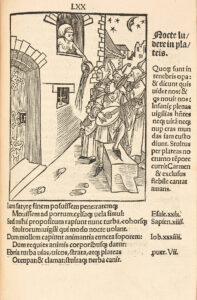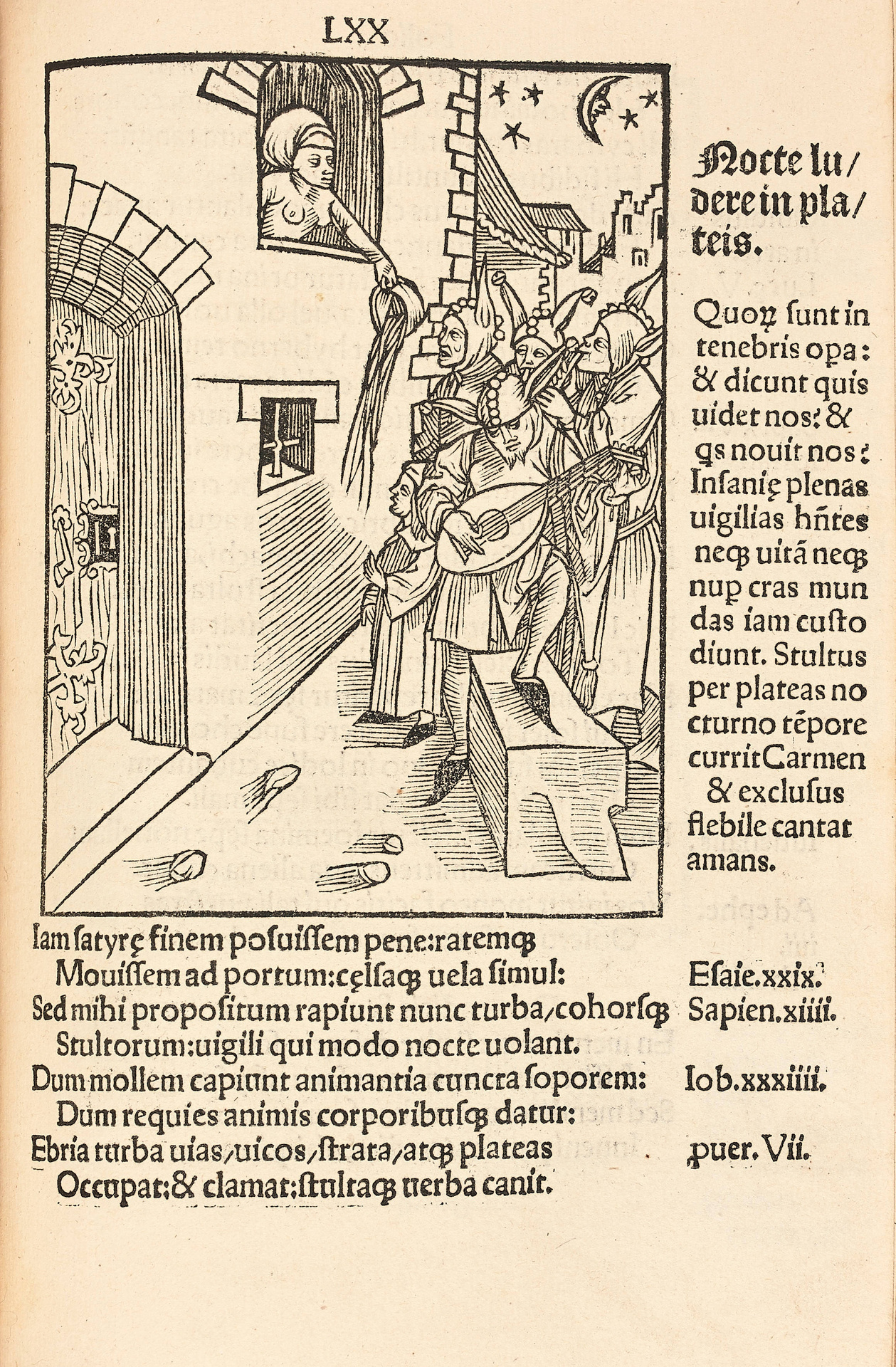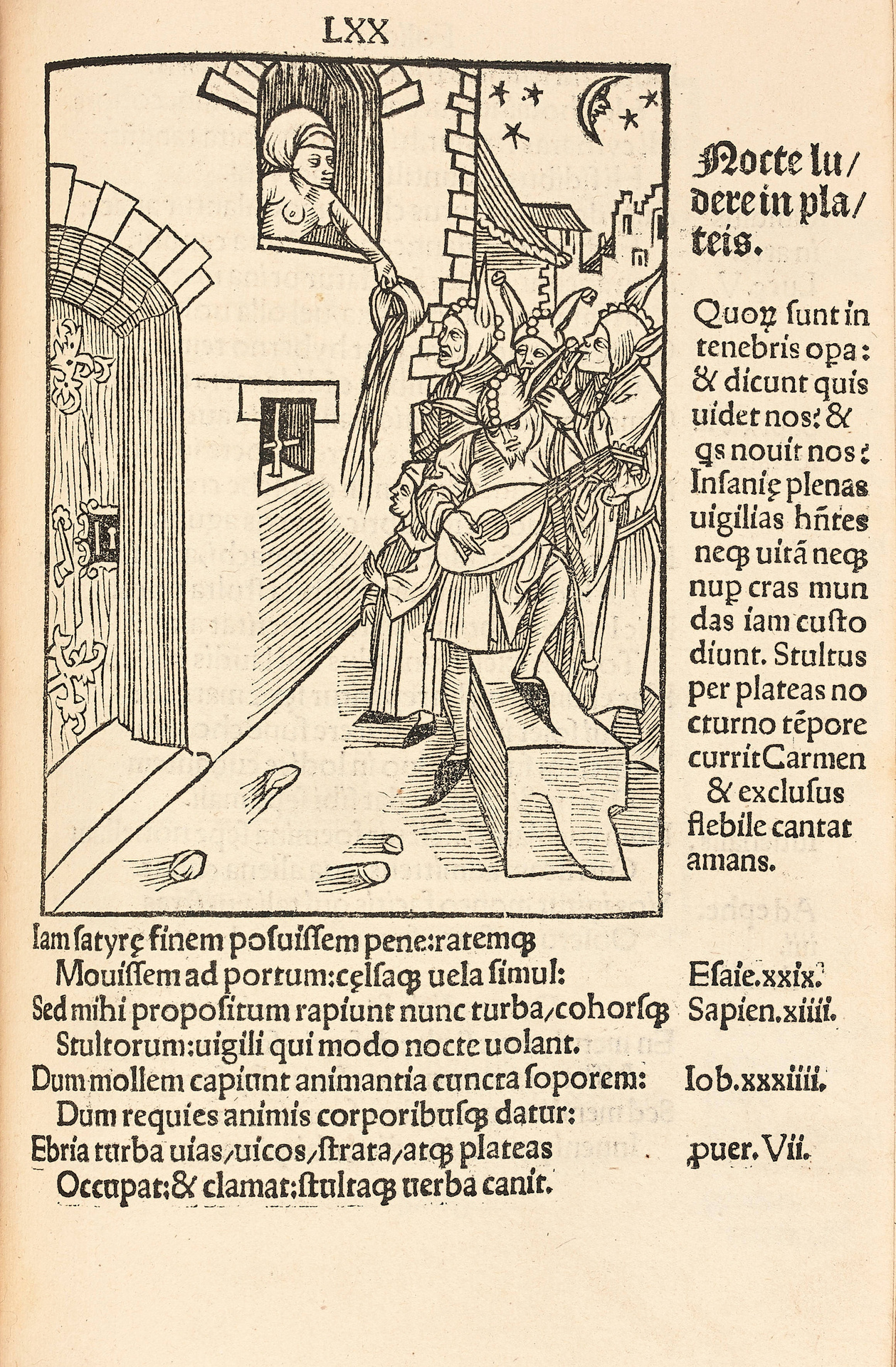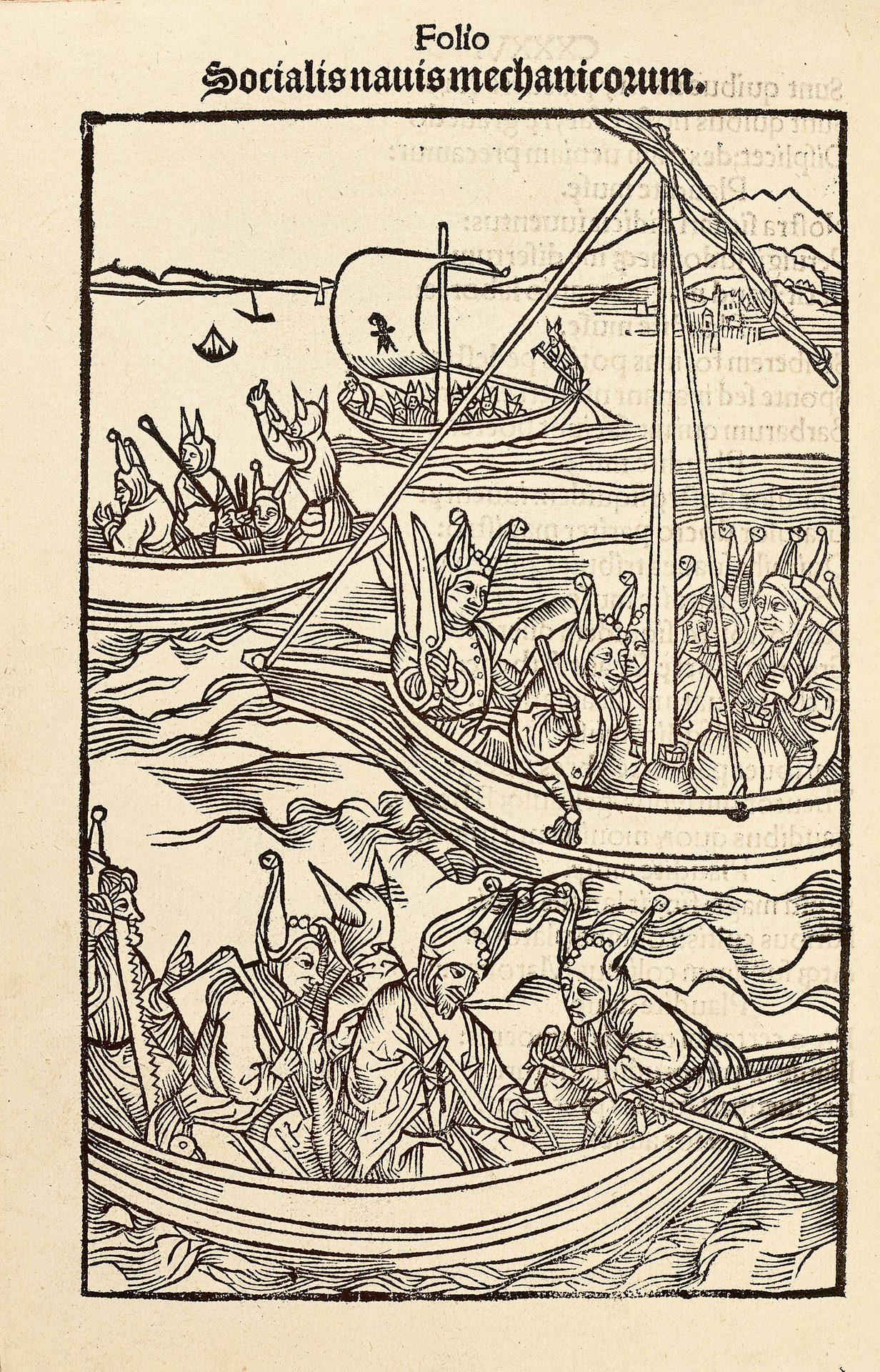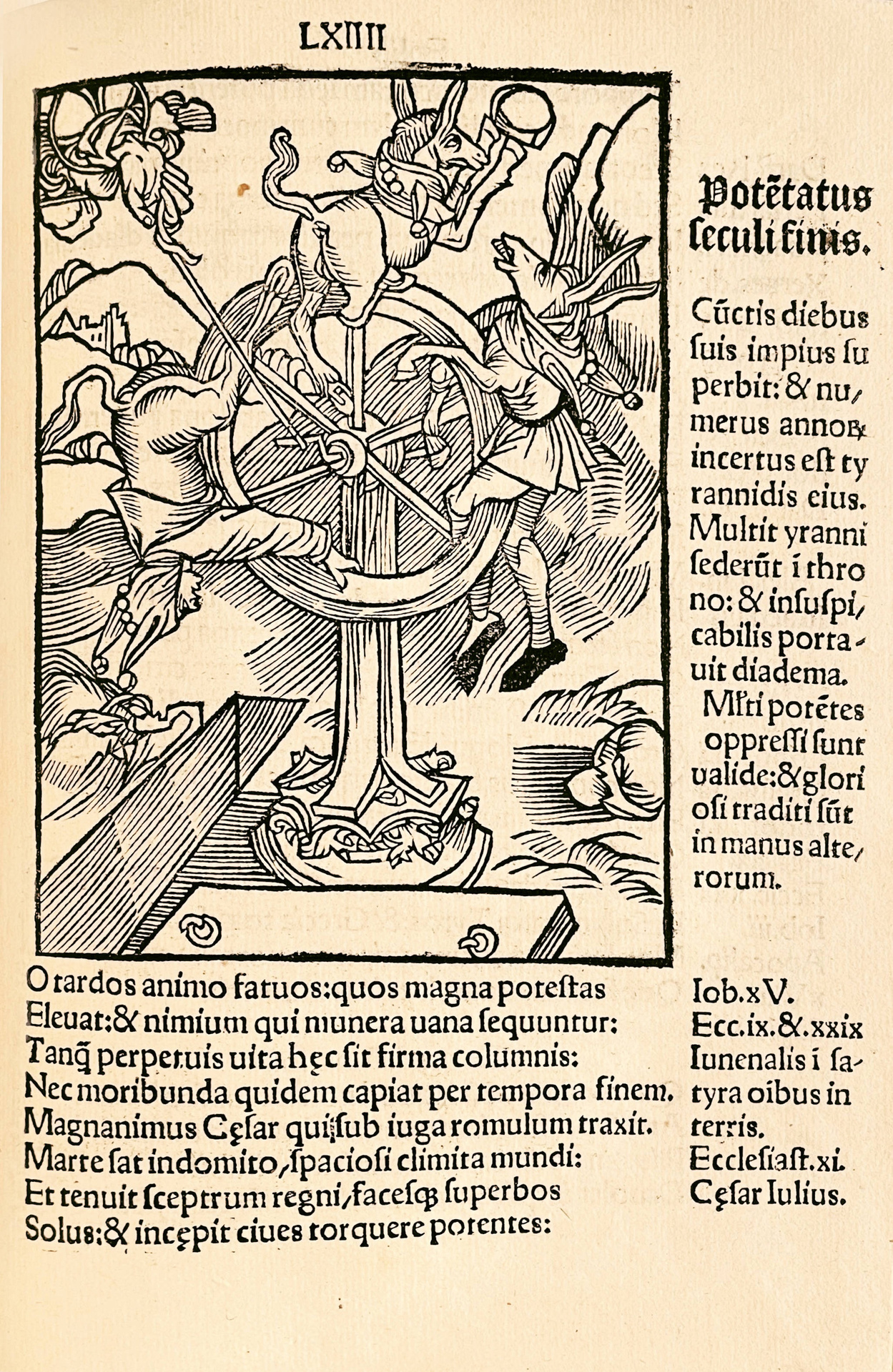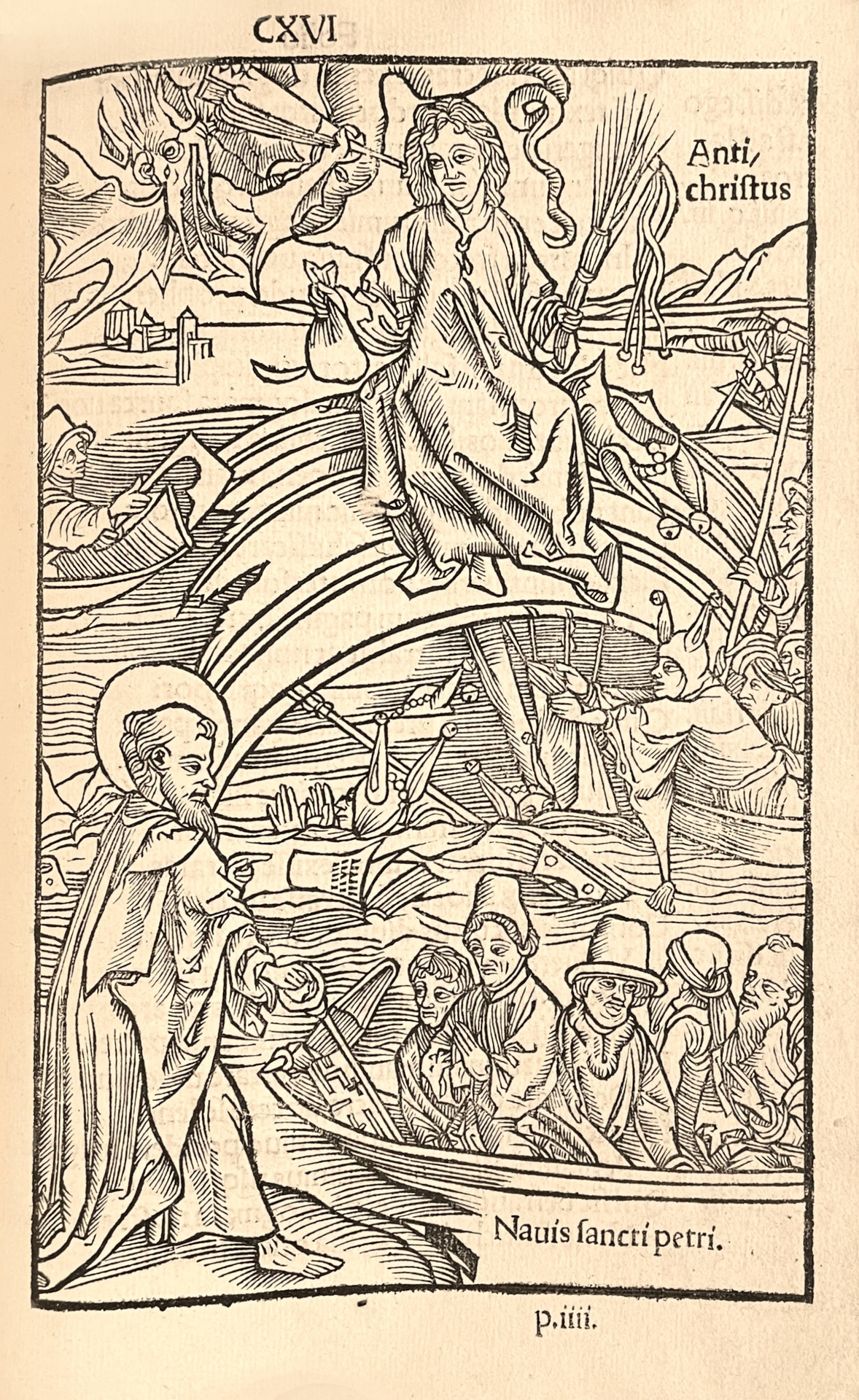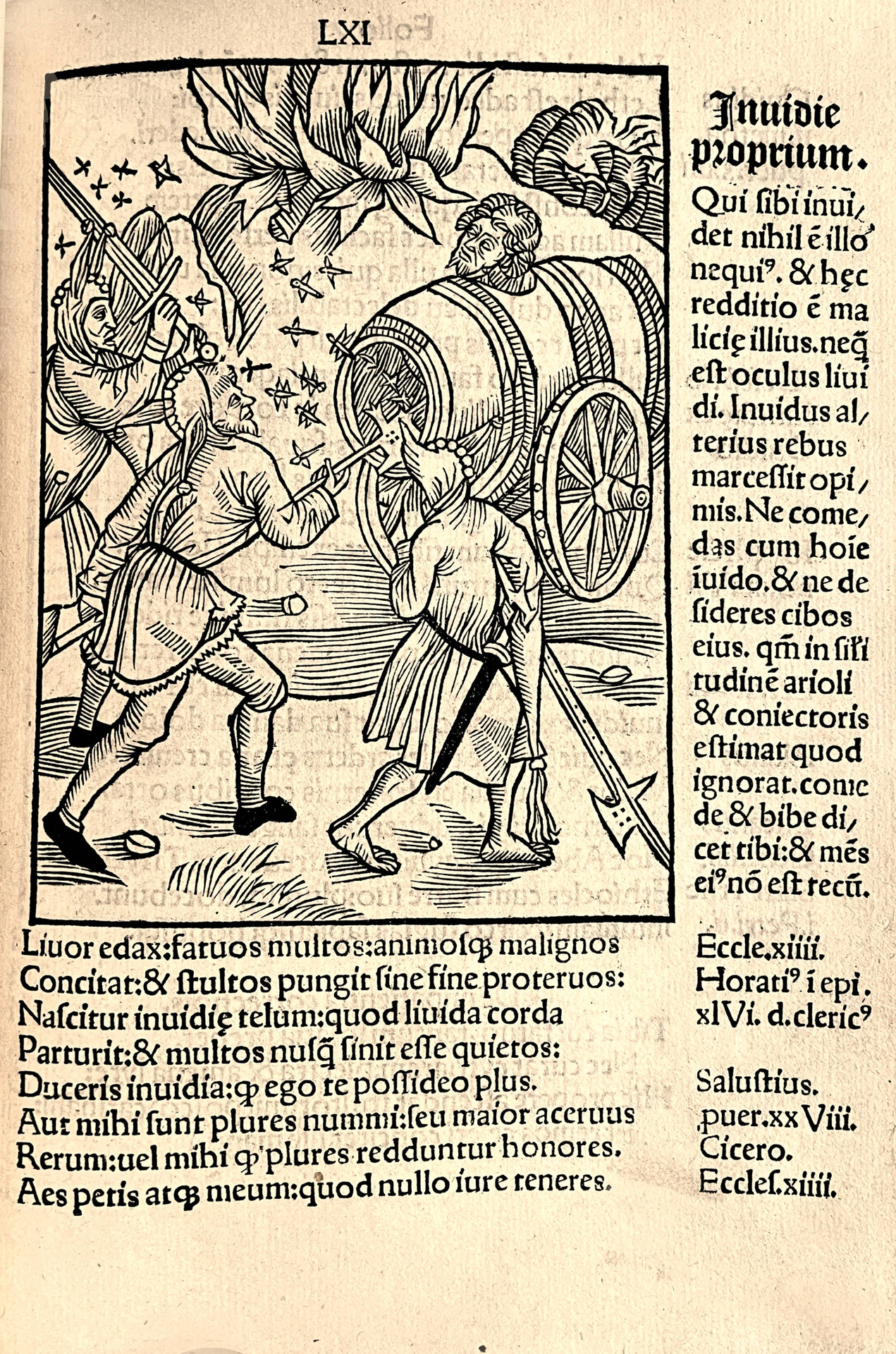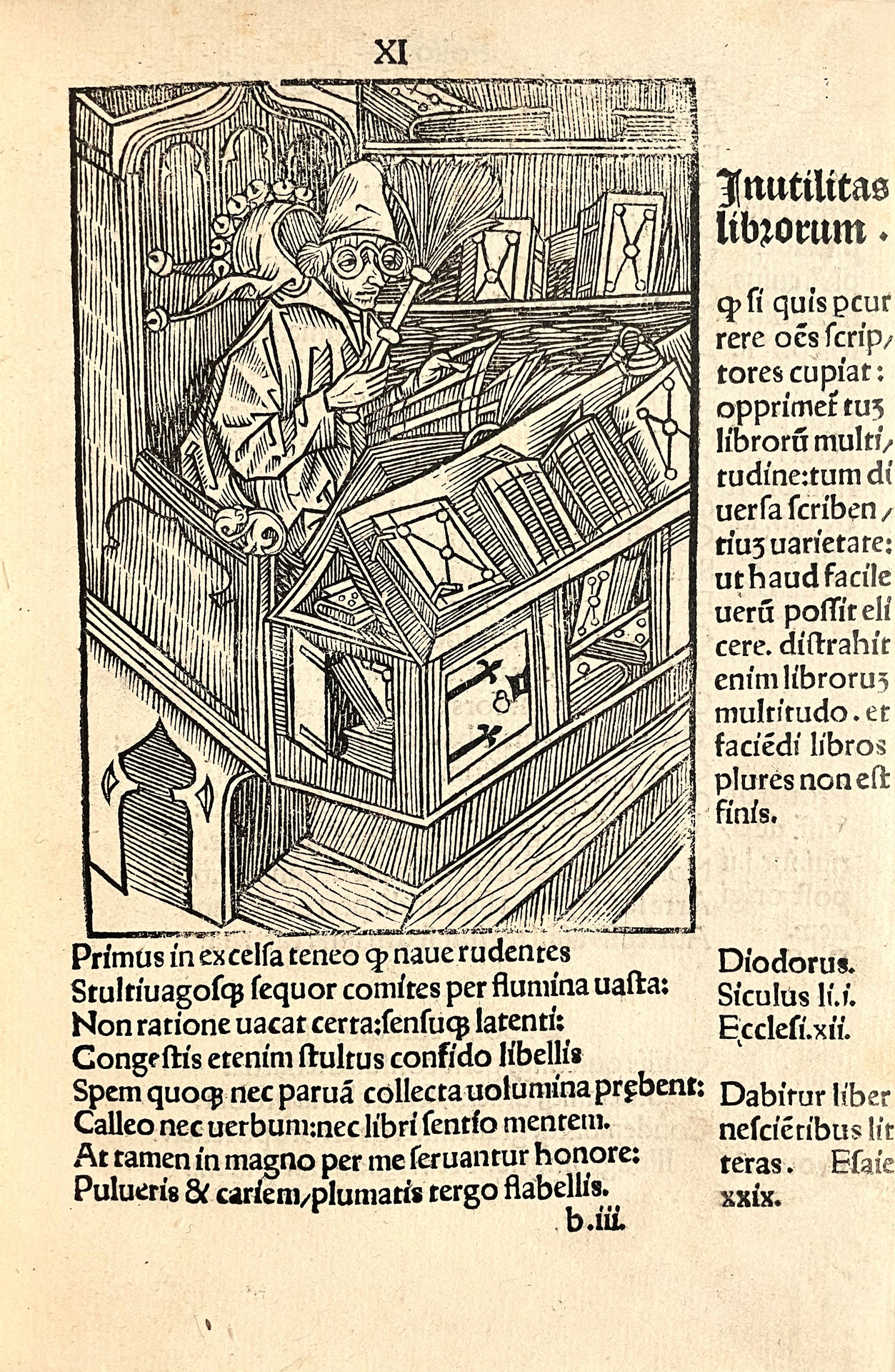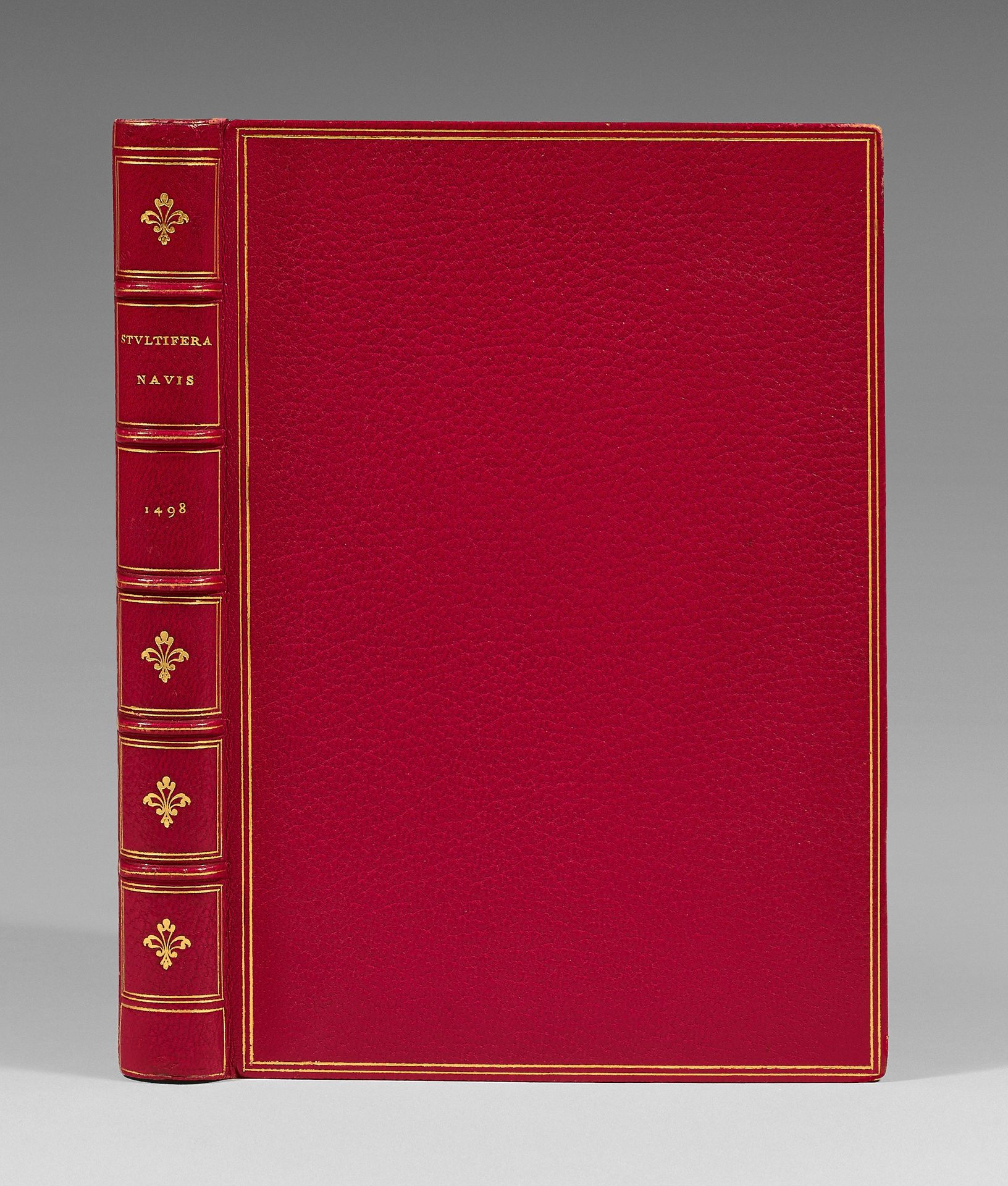Paris: [Joannes Philippi pour] Enguilbert, Jean et Geoffroy de Marnef, 8 March 1498.
Small 4to of clii ll., (4) ll., 118 woodcuts including 1 on the title-page, small restored tear in the margin of p. xv, short lateral margins with few marginalia and the extremity of one engraving cropped.
Red morocco, double gilt fillet around the covers, decorated ribbed spine, inner gilt border, gilt edges. David.
189 x 129 mm.
First Latin incunabular edition published in Paris.
Hain 3753 ; Goff B. 1092 ; BMC VIII 150.
The most beautiful incunabular illustrated edition – “this Parisian edition is more beautiful than the previous ones”. (Brunet, I, 1204).
It is illustrated with 118 woodcuts including one on the title, 113 in the text and 3 full-page. One may also find the mark of the Marnef brothers on the back of the last leaf. This illustration reproduces that of the first Latin edition of 1497, that was attributed by Erwin Panofsky to Albrecht Durer (La Vie et l’art d’Albrecht Dürer, pp. 53-54).
It is here of remarkable quality.
“The Paris de Marnef edition, 1498, 4to, in round letters, with woodcuts, bears the same title as the Basel edition of March 1497; it has clii numbered ll. and 4 not numbered ll., 3 of which containing the table; on the back of the last numbered leaf reads the subscription: Finis Narragonice navis: … in laudatissima vrbe Parisiensi: nup opera & pmotioe Gaufridi de marnef. Anno salutis nostre M.CCCCXCVIII. die Viii Martii.The leaf which ends the volume presents, on the front, 8 Latin verses with a figure entitled Fatus mundanus, and on the back the mark of Marnef. There are a total of 118 plates”. (Brunet)
Born in Strasbourg in 1458, Sebastian Brandt wrote this work when he became counsellor to the Emperor Maximilian I.
The idea of the poem may go back to an old tradition of Mardi Gras, specific to people from Haut and Bas-Rhin.
The author embarks on a ship all the fools of the country, representing the various social classes: clergy, nobility, magistracy, university, trade, farmers, cooks… To each one a chapter is dedicated allowing Brandt to sketch a caricature of the various communities and professions and a satire of the main nonsense, excesses and vices of human nature.
The illustration, which is stunning for the time in its satirical inspiration, is composed of 118 woodcuts depicting with a sharp eloquence scenes of the everyday life.
These woodcuts (112 x 85 mm) reproduce in very pure proofs those of the French edition of 1497.
From the outset, however, they were designed to illustrate a 4to format edition.
Moreover, three woodcuts are printed here for the first time: the one of the title-page and two figures, illustrating the additions brought by Brandt to his work, on ll. S4 and S6 (full-page).
The modernity of the illustration confers a major interest to the work and makes it one of the most famous illustrated works in the history of book. it is indeed one of the first examples of humorous engravings and one of the first illustrations directly adapted to a text.
Claudin considers this set of engravings as one of the most important of French illustrated book and reproduces no less than 9 engravings.
Fairfax Murray comments this iconography in these terms: “In text are illustrations of great interest, the varieties of perennial human folly, being portrayed with much humour and introducing amongst other things representations of trades and occupations of the period”.
Provenances: Charles Lormier with his ex-libris with the initials CLR (Charles Lormier de Rouen) (cat. 1, 1901, n°280); André Hachette, with ex-libris; Georges Flore and Geneviève Dubois, with ex-libris.
